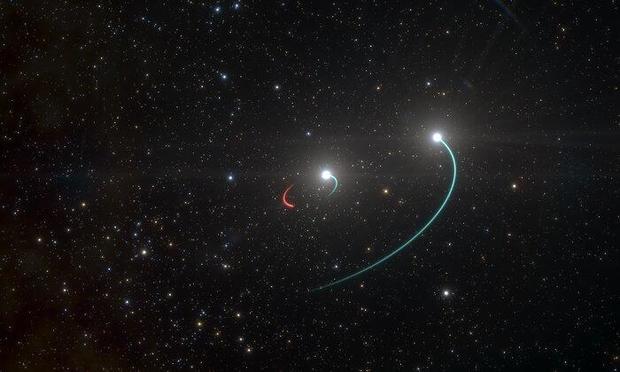Astronomers discover the closest black hole to Earth — and you can see it with the naked eye
Astronomers have discovered a new black hole, and it's practically in our backyard. Researchers say the black hole is just 1,000 light-years away from Earth — closer to our solar system than any other found to date.
1,000 light-years may seem far away, but on a cosmic scale, it's incredibly close. In comparison, Sagittarius A*, the infamous supermassive black hole at the center of the Milky Way, is more than 25,000 light-years away, and the first black hole to ever be captured on camera is 55 million light-years away, in a whole other galaxy.
1,000 light-years is so close that astronomers say the two stars that dance around the black hole can be seen with the naked eye on a clear night in the Southern Hemisphere. The stellar system is the first of its kind to be visible in this way.
The black hole, which has a mass four times that of the sun, is located in a system called HR 6819, in the constellation Telescopium, according to research published Wednesday in the journal Astronomy & Astrophysics. Researchers tracked the system using the MPG/ESO 2.2-metre telescope at the European Southern Observatory's La Silla Observatory in Chile.
When the team began its research, astronomers weren't searching for a black hole. Instead, they were interested in studying double-star systems, and were shocked when a third, previously undiscovered body was spotted within HR 6819 — making it a triple-star system.
Unlike most black holes, which can be spotted when they violently interact with their environment, the unique one found in HR 6819 appears truly black, making it completely invisible. The team was only able to detect and research it by studying the warped 40-day orbit of one of its companion stars, which is nearby but not close enough to be sucked in.
"An invisible object with a mass at least four times that of the Sun can only be a black hole," study co-author and ESO scientist Thomas Rivinius said in a press release about the findings.
We don't know much about the possible black holes scattered across in our galaxy — astronomers have only spotted a couple dozen of them to date. But the discovery of this black hole could provide insight into the locations of others hidden in the Milky Way.
In fact, astronomers estimate there may be hundreds of millions of undiscovered black holes lurking.
"There must be hundreds of millions of black holes out there, but we know about only very few. Knowing what to look for should put us in a better position to find them," Rivinius said. ESO astronomer and study co-author Dietrich Baade added that finding a black hole in a triple system so close to Earth indicates that it's just "the tip of an exciting iceberg."
And researchers already have their first lead. They believe another system, called LB-1, could also be a triple star system, but more observations are needed to confirm their suspicions.
"By finding and studying them we can learn a lot about the formation and evolution of those rare stars that begin their lives with more than about eight times the mass of the Sun and end them in a supernova explosion that leaves behind a black hole," said co-author and ESO postdoctoral fellow Marianne Heida.





